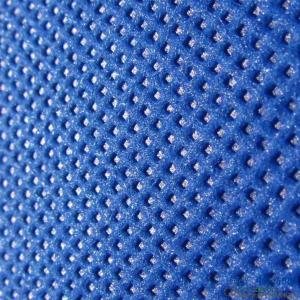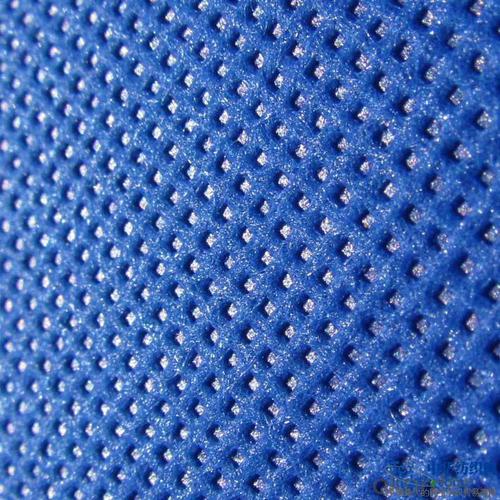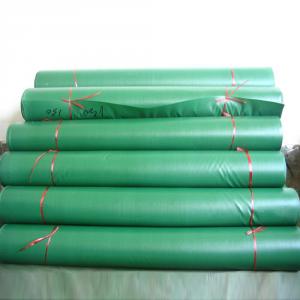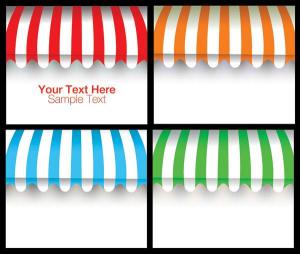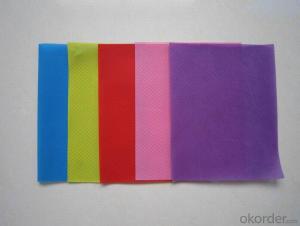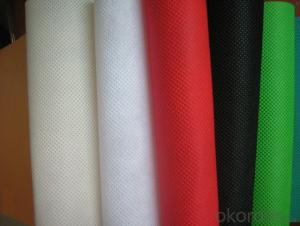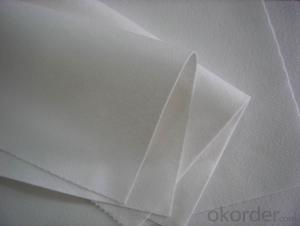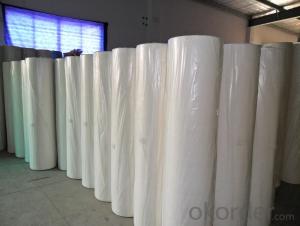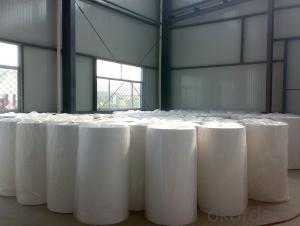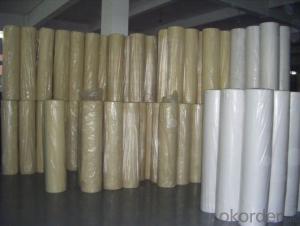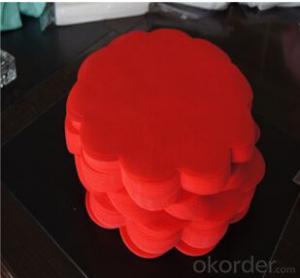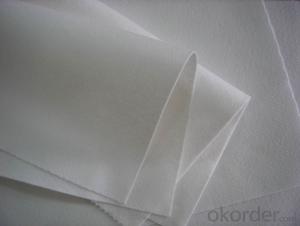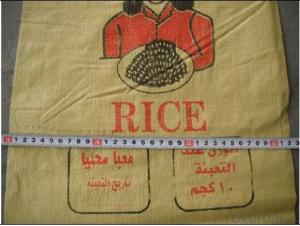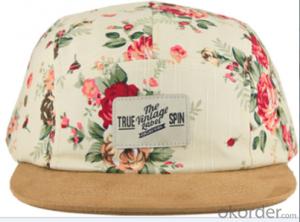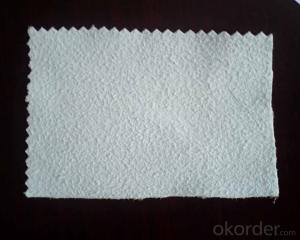pp non woven fabric manufacturer for shopping bags
- Loading Port:
- Shanghai
- Payment Terms:
- TT OR LC
- Min Order Qty:
- 1000 roll
- Supply Capability:
- 10000 roll/month
OKorder Service Pledge
OKorder Financial Service
You Might Also Like
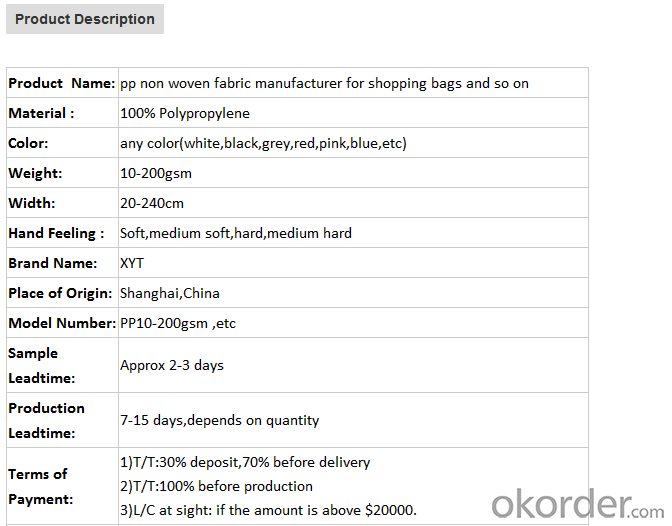 PP non woven weed control mat is made of environmentally friendly raw materials, pp spunbond nonwoven fabric. It used to prevent the growth of weed, without the use of potentially dangerous chemical sprays or labor intensive hoeing. Once installed, weed mat will continue providing protection for years without maintenance.
PP non woven weed control mat is made of environmentally friendly raw materials, pp spunbond nonwoven fabric. It used to prevent the growth of weed, without the use of potentially dangerous chemical sprays or labor intensive hoeing. Once installed, weed mat will continue providing protection for years without maintenance.
They are permeable fabrics, which allow air, water and nutrients to pass through, and designed to block out the sun to reduce photosynthesis and stop weed growth.
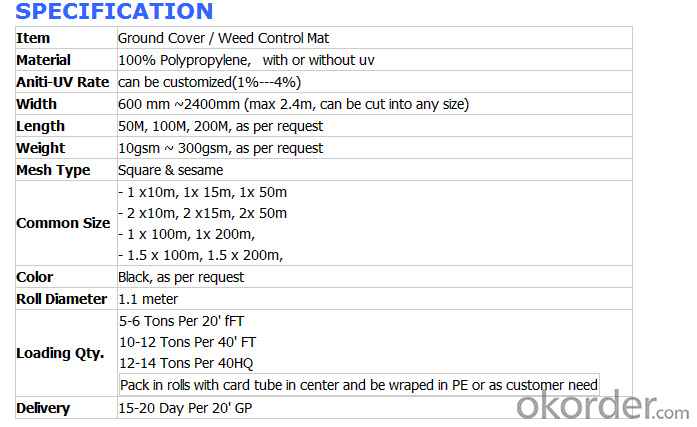
The use of landscaping fabrics has become extremely popular in recent years for many reasons:
1. Leisure time is maximised - the need for weeding and on-going maintenance is minimised
2. Environmentally friendly - no need for chemical based weed killers
3. Promotes healthier plants - it allows the soil to breath and water to permeate
We offer different types of weed control fabrics to suit all applications and budgets.
1. Available in a range of sizes & materials to suit various applications from small to large landscaping projects, in both commercial and domestic situations.
2. All our landscape fabrics are UV stabilised
3. Ideal for use under paths, patios, decking, paving, bark mulch, gravel etc.
FEATURES:
1. Weed suppressant and drainage control landscaping fabric
2. Spun bonded non-woven fabric – will not fray when cut
3. Easy to use
4. Environmentally friendly
5. Allows water, air and nutrients through, suppressing weeds without the use of chemicals
6. Good alternative to Plantex® where cost is a factor
7. UV Stabilised
8. Reduces the level of watering required due to the slower rate of water evaporation
FUNCTION:
1. Cover crops in the ground surface,prevent weeds and against the insect
2. Controlling soil humidity and the temperature
3. Does not affect the growth of the crops
4. Protects plants from harmfully solar radiation
5. Air permeability, water permeability help crops growth.
6. Mothproof, eco-friendly, breathable, anti-bacteria, tear-resistant, fusible
APPLICATIONS:
1. Weed block for landscaped garden beds
2. Permeable liners for planters (stops soil erosion)
3. Weed control under wooden decking
4. Geotextile for separating aggregate / soils under walkway blocks or bricks
5. Assists in preventing paving from settling unevenly
6. Landscape fabric prevents soil erosion
Health - Hygiene & Medical
Surgical Gowns
Gloves
Face Masks
Foot covers
Diapers
Caps
Bedsheets
Curtains
Pillow Covers
Slippers
Packaging
Sleeping Bags
Tarpaulins
Tents
Artificial Leather
Bags for Rice/Sugar etc.
Luggage
Vacuum Cleaner Bags
Tea and Coffee Bags
Buff Pads
Shopping Bags
Agriculture
Crop Covers
Turf Protections
Nursery Over wintering
Weed Control Fabrics
Root Bags
Containers
Capillary Matting
Other types of covers
Furniture Upholstery
Roofing and Tile Underlayment
Acoustical Ceilings
Insulation
House wrap
Pipe wrap
Sofa and Mattress Lining
Shoes & Garments
Coveralls
Pillow cases
Airline Headrests
Interlinings
Clothing and Glove insulation
Bra and Shoulder Padding
ADVANTAGES:
1. Lower labour costs as no weeding maintenance for years;
2. Water seeps through and can conserve soil moisture for improved growing conditions;
3. Air escapes – humidity rises through the mat for a more controlled growing environment;
4. Increase crop yields close to 25% due to improved growing conditions and absence of water stress and competition of nutrients absorption from weeds;
5. Minimises bacteria and fungus problems especially Algae;
6. Strong, woven construction or pressed fibre sheet resists tears and punctures;
7. Resistant to mildew, rot, water, sunlight and most of the agricultural chemicals
8. Fertilizer is applied on the mat, thus helping the owner or estate manager to monitor the progress of manuring;
9. Prevents soil erosion or leaching of soil nutrients or fertilizers applied;
10. Environmental friendly.
- Q: How can paint points be removed during textile processing?
- So, if it is a slight, a small amount of paint points, you can use butyl acetate rubbed, and then through the conventional pre-treatment process to remove it
- Q: Textile fabric classification, dyeing and finishing processing is what?
- New type of fabric in the chenille fabric, knitted bamboo fabric should also be classified.
- Q: What are the textiles?
- Decorative textiles can be divided into indoor products, bedding and outdoor products, including home cloth and restaurant bath toiletries, such as: carpets, sofa sets, chairs, tapestries, patch, cover, textile, curtains, towels , Tablecloths, handkerchiefs, etc .; bedding, including bedspreads, bed sheets, was surface, quilt, blankets, towels, pillow core, the core, pillowcases and so on. Outdoor products include artificial turf and so on
- Q: Textile raw materials of mineral fiber
- The main ingredient is inorganic, also known as natural inorganic fibers, inorganic metal silicates, such as asbestos fibers.
- Q: Processing of textiles, processed products were detected formaldehyde exceeded, how to deal with
- Fast method can be found in the finishing of textile manufacturers, adding formaldehyde elimination agent to eliminate formaldehyde.
- Q: Textile finishing TPU, TPEF film. What's the difference?
- TPU cold resistance: TPU glass transition temperature is relatively low, at minus 35 degrees still maintain good flexibility, flexibility and other physical properties.
- Q: What is the imo standard in the textile industry?
- International Association for the International Textile Industry (IVN), Soil Association (SA), Organic Trade Organization (OTA) and Japan Organic Cotton Association (JOCA) to develop global organic textile standards.
- Q: How to do the textile warehouse damp
- How to control the production and storage environment has become an urgent problem to be solved in the development of many factories. Therefore, we have to use the moisture-proof facilities in the very humid environment of the industrial workshop, so that the industrial workshop can reach a good humidity range and avoid the dampness , To ensure that the production workshop, storage inventory environment, improve the quality of the product.
- Q: What is the use of polyurethane TPU hot melt adhesives in textiles?
- Carpet rubber adhesive with the basic material for the ethylene and other olefinic monomer copolymer, such as ethylene - vinyl acetate copolymer, ethylene acrylate copolymer. The vast majority of cases are the use of ethylene. Vinyl acetate copolymer (EvA).
- Q: Buy two large round machine to do processing, in Changshu side of the textile processing to do it?
- Changshu's overall strength is good. Textile industry more, there is the strength of the points, the goods will be the merits of the points
Send your message to us
pp non woven fabric manufacturer for shopping bags
- Loading Port:
- Shanghai
- Payment Terms:
- TT OR LC
- Min Order Qty:
- 1000 roll
- Supply Capability:
- 10000 roll/month
OKorder Service Pledge
OKorder Financial Service
Similar products
Hot products
Hot Searches
Related keywords
